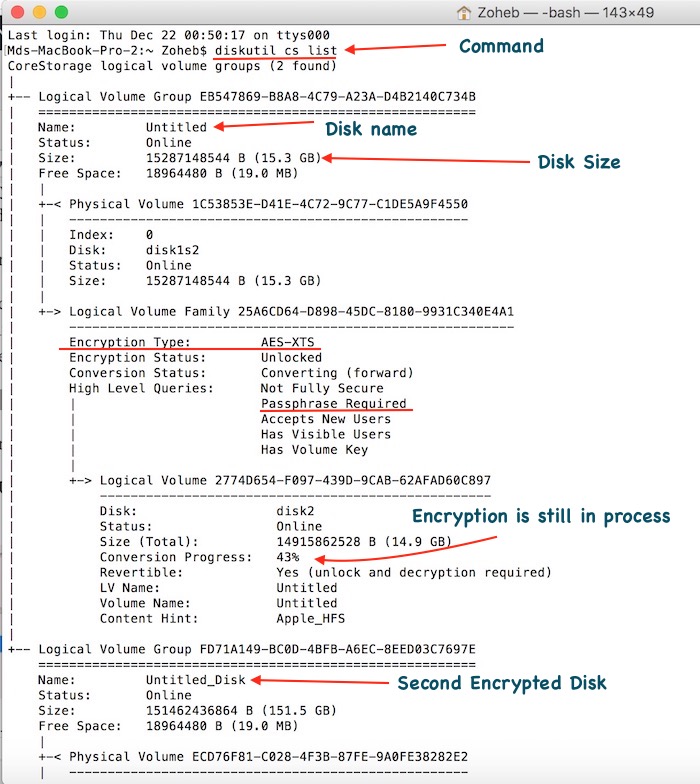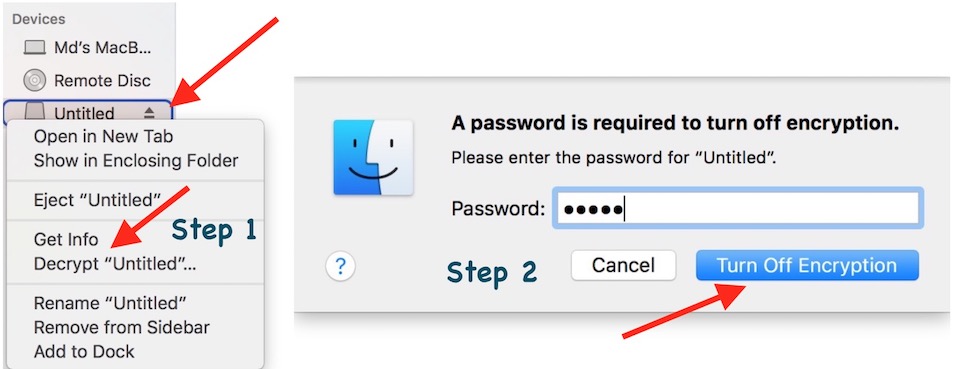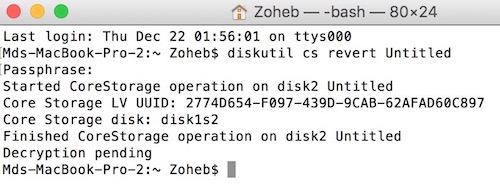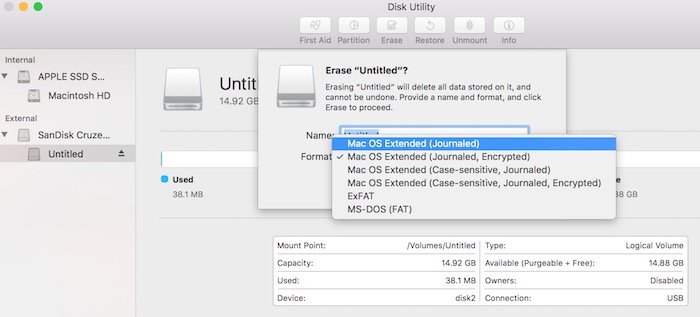How to Decrypt USB or External Storage On macOS
Earlier we learned how you can encrypt external storage with a password on Mac and now we will tell you how you can delete the encrypted drive or decrypt it. Before we go ahead to tell you the process, let’s learn to identify an encrypted drive.
How to identify an encrypted external storage on macOS or Mac OS X
Method Number 1
Whether it’s an External Hard Disk or USB Drive, connect it to the USB port of your MacBook or iMac. As soon as it is connected, an encrypted storage medium will prompt to type the password. That means the device is encrypted.
Note: When you connect an encrypted drive to Mac, you get the option to tick Remember Password option. If you have already ticked this option earlier, Password prompt will not appear. If you are not sure, please follow the method 2.
Method Number 2
This method can be used to see one or even multiple encrypted drives that are connected to Mac. You will have to launch Terminal option where you can type command. Copy and Paste the below-mentioned command in Terminal, and press Enter key. Now it will show the list of encrypted drives and more details on it. If the High Level Queries option shows Passphrase Required that means storage is encrypted with a password.
diskutil cs list

Method Number 3
Launch Disk Utility and select the external drive to see whether it’s encrypted or not. If it is encrypted, it will show on the screen.

How to Decrypt or Remove Password from Encrypted USB Drives and External Hard Disk Drives
The decryption process mentioned below will work only if you know the password. If you don’t know there is no need to follow these steps.
Method 1: Decrypt and Remove Password Without Losing Any Data
- Make sure the External Storage is Connected to the Mac’s Drive Properly
- Launch Finder Application
- Right-click on USB/External Drive and select Decrypt option
- Type the password to decrypt the drive, and click Turn Off Encryption option
Decryption takes time so don’t remove the storage medium right now. You can always right-click on the external drive and check the status. Don’t remove until it shows Decrypting “Disk_Name.”
Method 2: No Data Loss
- Launch Terminal and Type the following command
diskutil cs revert Disk_Name
- Enter the Password and Press Enter key. It will show Decryption Pending in the end. Please ignore the message
- Now hang on until the decryption is complete. You can always see the status going to Finder and right-click on the drive. Don’t remove until it shows Decrypting
Method 3: Loss of All Data – Deleting Encrypted CoreStorage Logical Volume
- Type the following Command in the Terminal and press Enter key
diskutil cs delete drive_name
- example: cs delete drive Untitled_Disk
- Note: If you face any issue while using this command. Please type this command first;
diskutil cs listand press Enter. Note down Logical Volume Group ID (See the screenshot above), and then type this command to format the encrypted drive;diskutil cs delete Logical_Volume_Group - Now Encrypted Drive will be formatted and decrypted.
Method 4: Loss of Data
Launch Disk Utility, erase the drive to decrypt it and remove password protection. However, please make sure you don’t select the Encrypted option while erasing. Just select the normal one “Mac OS Extended Journaled.”
Related; Secure Folder and Files With Password on Mac



